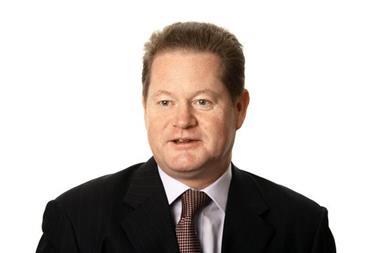The top men in QBE are in London to talk about the restructuring of the group’s European management, and they reveal that they have their eye on more acquisitions
“When I started back in 1976, the group was writing A$90m (£54m) of premium, made an operating loss the year before and had a market cap of A$7.5m,” QBE chief executive Frank O’Halloran says in his distinctive Aussie tone.
More than 30 years on, he has global expansion, 125 acquisitions and a premium income of A$14.46bn under his belt. You get the feeling that he still cannot believe how far he has come.
O’Halloran is in London today, with his UK chief executive Steven Burns at his right hand, to talk to analysts and Insurance Times about the restructuring of QBE’s European management. He also drops intriguing hints that the insurer could be back on the acquisition trail.
Aussie expansion
First, let’s go back a bit. Australian powerhouse QBE made its mark on the UK market in the mid-1990s when it acquired Limit, a Lloyd’s underwriting agency. This in turn had been formed from a merger between Bankside Underwriting Agency and Janson Green, where Burns was finance director.
Following Limit’s integration, Burns was promoted to run the European part of the group. “It was the biggest risk of all our acquisitions,” says O’Halloran. “The first thing we did was to try to win hearts and minds. People were saying, here’s another Aussie company trying to land in Europe.”
Burns is blunt about the tough job he faced: “There were parts of Limit’s business that were a pile of, well, you know what. What Frank did was to give us focus, and make us realise it was okay to lose the underperforming elements – and to be brutal about it.”
A couple of years back, QBE brought Limit and its various other UK arms under the same brand. Since then, the QBE business has been noted for its carpet-bombing approach to advertising
and high-profile sponsorships. It also hit the headlines with an audacious, but ultimately unsuccessful, attempt to take over fellow Australian insurer IAG.
In a market where the personalities of insurer bosses usually define the organisation’s culture, there is a perception that Burns and O’Halloran have deliberately taken a back seat in the broking market in deference to the measured chief underwriting officer John Neal and QBE’s gregarious property boss Bernard Mageean. Since then, QBE has become an established player in the UK, with a strong reputation in commercial motor and growing clout in new lines such as property, where it is taking on the big boys.
Like Brit and a couple of other insurers that originated in Lloyd’s in the UK, it is trying to expand its regional presence, with a fair degree of success.
That story has been covered elsewhere, however, and Burns and O’Halloran are here today to talk about group issues, such as the European management restructure and the firm’s acquisition plans.
Make your own luck
There is good chemistry between the pair: one former colleague of Burns describes him as being made from the same mould as his boss. “They can both be very direct,’ he says, “and they can both be two-faced depending on who they are talking to – but in a nice way, if you catch my drift.
“They both have that down-to-earth way about them. They position themselves and the QBE business according to what’s right in front of them or, more importantly, coming at them, as opposed to having a real cunning plan. It’s a risky approach, but the luck has gone their way.”
QBE UK has created eight underwriting hubs under the banners of casualty, property, motor, reinsurance, marine and energy, aviation, specialty and British marine. The management team has been overhauled as well, with Neal given an expanded role.
Back-office staff have been culled following a review of the business by Accenture, which puts O’Halloran and Burns firmly back in the driving seat.
Buying strategies
It seems QBE is ready to add to the 125 businesses it has bought so far. “We sit and wait for when opportunity comes,” O’Halloran admits, neatly summarising the group’s approach to expansion. “There have only been a couple of periods where we’ve gone for organic growth, and one of those periods was in 2002-03, when pricing went through the roof following the Independent Insurance collapse and World Trade Center event.”
“We’re looking for acquisitions in Australia and Asia, and we’ve spent a lot of time looking here; it is well known that we looked at and missed out on Fortis,” he adds, ruling out any plans to buy brokers.
O’Halloran is surprised that there has not been more global insurer consolidation. “If a company continues to have CORs [combined operating ratios] in hundreds, or high 90s, investors won’t be happy, and most of our opportunities come from someone picking up the phone and saying to Steven, ‘Would you like to have a look at our non-life operations?’”
O’Halloran’s body language changes, however, when pushed about whether QBE is indeed an acquisition target in its own right.
“We have to act in the interests of our shareholders … if the price is right, we have to say to them, ‘this is a good deal for you’,” he says, trotting out the corporate line. “I’m sure a lot of companies run the rule over us.”
Burns is a little more candid: “It spurs us on. We want to be independent. Having a high share price for shareholders keeps you independent. The day we cock up and our share price halves, then we will become a target.”
Indeed. In the meantime, it’s a case of who blinks first. IT
Hosted by comedian and actor Tom Allen, 34 Gold, 23 Silver and 22 Bronze awards were handed out across an amazing 34 categories recognising brilliance and innovation right across the breadth of UK general insurance.












































No comments yet